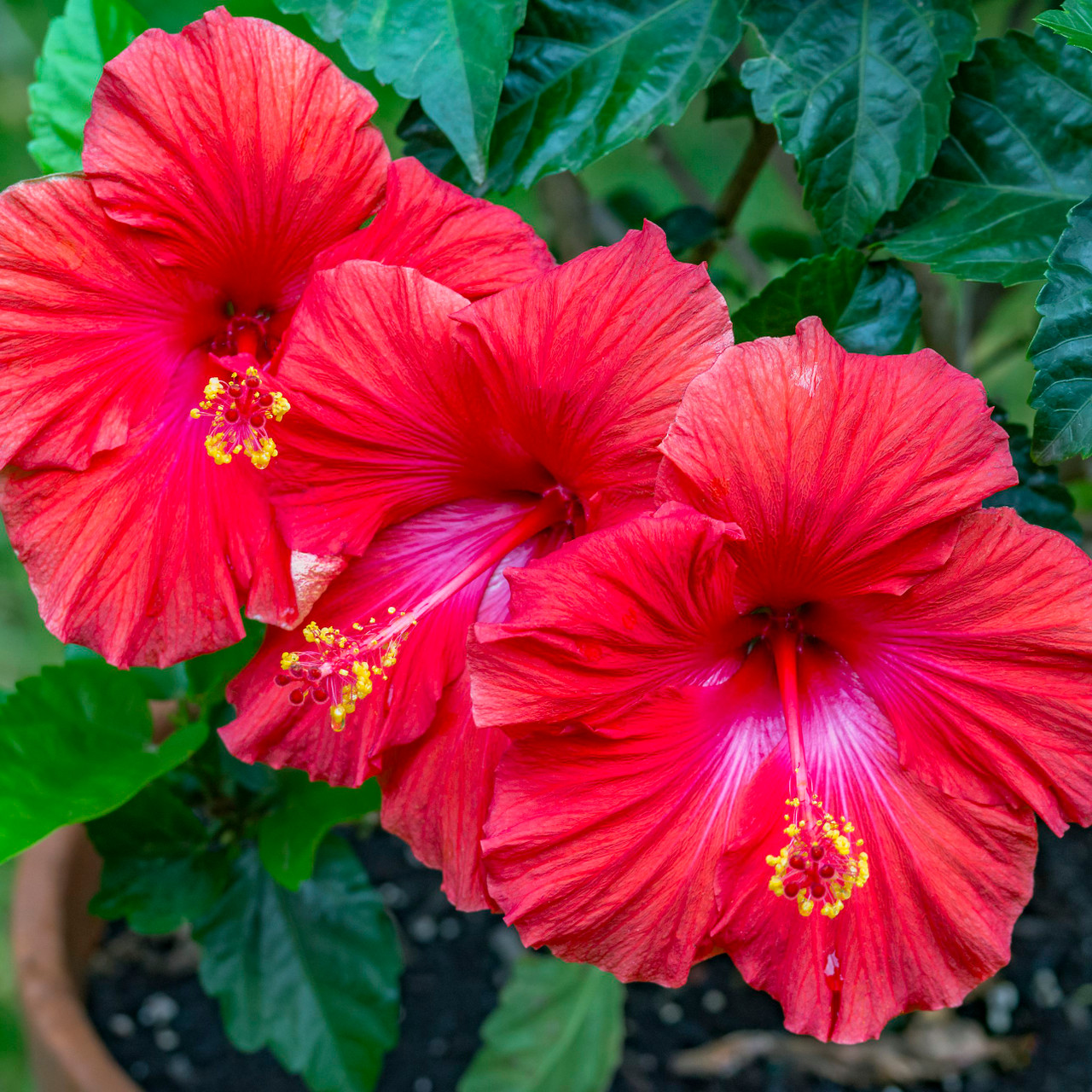
Hibiscus plants are tropical or subtropical flowering shrubs known for their vibrant, showy flowers. Here's a step-by-step guide on how to grow hibiscus:
Climate: Hibiscus plants thrive in warm climates and are typically grown in USDA hardiness zones 9-11. They can also be grown in containers and brought indoors during colder months in cooler climates.
Sunlight: Hibiscus plants require plenty of sunlight to thrive and produce abundant blooms. Choose a location that receives at least 6-8 hours of direct sunlight per day. However, in very hot regions, some afternoon shade can be beneficial to prevent leaf scorching.
Soil: Hibiscus plants prefer well-draining soil that is rich in organic matter. The soil should be slightly acidic to neutral with a pH range of 6.0-7.0. If your soil is heavy or clay-like, you can improve drainage by adding organic matter such as compost or well-rotted manure.
Planting: Dig a hole that is wider and deeper than the root ball of the hibiscus plant. Place the plant in the hole, ensuring that the top of the root ball is level with or slightly above the soil surface. Backfill the hole with soil, firming it gently around the roots. Water the plant thoroughly after planting.
Watering: Hibiscus plants require regular watering, especially during hot and dry periods. Keep the soil consistently moist, but avoid waterlogging. Water deeply, allowing the soil to dry out slightly between waterings. Mulching around the base of the plant can help retain soil moisture.
Fertilizing: Hibiscus plants benefit from regular fertilization to support healthy growth and blooming. Use a balanced, slow-release fertilizer or a specific hibiscus fertilizer. Follow the instructions on the packaging for the recommended application rates and frequency. Fertilize every 4-6 weeks during the growing season (spring and summer).
Pruning: Prune your hibiscus plants to maintain their shape and encourage bushier growth. Pruning is typically done in late winter or early spring before new growth begins. Remove any dead or damaged branches, as well as any suckers or weak growth. Pinching back the tips of the branches can also promote branching and more flowers.
Pests and diseases: Monitor your hibiscus plants for common pests such as aphids, mealybugs, and spider mites. Treat any infestations promptly using insecticidal soap or other appropriate methods. Hibiscus plants can also be susceptible to fungal diseases such as leaf spot or powdery mildew. Proper air circulation, avoiding overhead watering, and removing any infected plant material can help prevent these issues.
Winter care: In colder climates, hibiscus plants may need protection during the winter. If growing in containers, bring them indoors before the first frost. If planted in the ground, you can provide winter protection by mulching around the base of the plant and covering it with a frost blanket or straw.
By following these guidelines and providing the right conditions, you can enjoy the beauty of hibiscus flowers in your garden. Remember to select hibiscus varieties that are suitable for your climate to ensure successful growth and blooming.

No comments:
Post a Comment